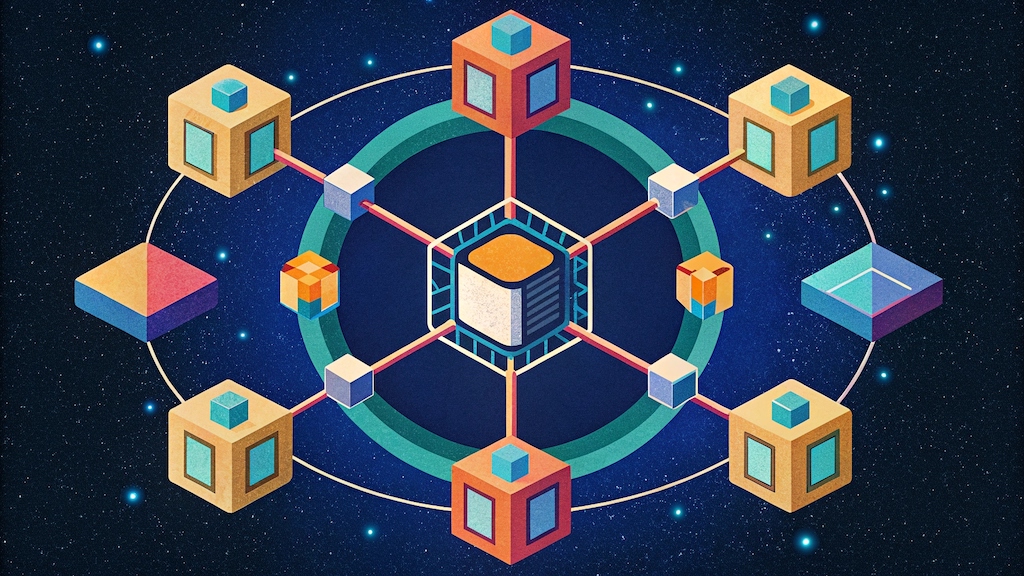
Discover How the Technology Behind Bitcoin, Crypto, and Decentralized Apps Really Works
In recent years, the term “blockchain” has dominated headlines and captured the imagination of investors, businesses, and curious newcomers alike. From powering cryptocurrencies like Bitcoin to enabling a wave of decentralized finance platforms and digital collectibles, blockchain technology is changing how people think about money, trust, and data. But what does blockchain actually do? How does it work beneath the surface? If you are brand new to the world of blockchain, this comprehensive introduction will break down the technology in plain language, helping you build a strong foundation before you take your first steps into crypto or Web3.
Understanding blockchain is crucial for anyone who wants to trade cryptocurrencies, interact with non-fungible tokens (NFTs), or simply feel confident navigating the next generation of the internet. In this guide, you will learn what a blockchain is, how it maintains security, why it is considered “decentralized,” and the role it plays in the rapidly growing digital economy.
1. What Is Blockchain? The Simple Definition
At its core, a blockchain is a type of digital ledger or record book that stores information across a network of computers. The name comes from the way data is grouped: transactions are bundled together into “blocks,” which are then linked in chronological order to form a chain. Each block contains not only a list of transactions but also key details that connect it securely to previous blocks. Once recorded, data in a blockchain is extremely difficult to change, making it highly trusted and secure.
Unlike traditional databases managed by a single authority, blockchains are maintained by a distributed community of users. Every participant keeps a copy of the same ledger, and new transactions must be verified by the network before being permanently added. This approach makes blockchain technology transparent, tamper-resistant, and independent from any centralized organization or government.
2. Why Blockchain Is Called “Decentralized”
Decentralization is one of the main benefits of blockchain. In a decentralized system, no single party is in control. Instead, responsibility for maintaining the ledger and validating transactions is shared across many nodes (computers). Each node independently reviews the data to confirm new transactions are legitimate before accepting them into the chain.
This stands in stark contrast to traditional banking, where a central database is overseen by a single organization. If a bank’s database is compromised, all users are at risk. In a blockchain, the distributed nature means there is no single point of failure—no hacker or rogue employee can quietly change the history or take funds without being detected.
By distributing trust, blockchains remove the need for a middleman and allow people and businesses to transact directly, anywhere in the world.
3. Blocks, Chains, and Cryptography: How a Blockchain Grows
Here’s how the process typically works:
- Transaction Creation: Someone initiates a transaction, such as sending cryptocurrency from one address to another.
- Broadcast to Network: The transaction request is sent to all computers (nodes) participating in the blockchain.
- Validation: The network checks the transaction to ensure it’s valid. For Bitcoin, this includes confirming the sender actually owns the coins being transferred.
- Bundling into Blocks: Verified transactions are collected by special nodes, often called “miners” or “validators,” into a new block awaiting approval.
- Block Confirmation: Depending on the blockchain’s rules, nodes work together to agree that the new block follows all protocols and is not fraudulent.
- Addition to the Chain: Once confirmed, the new block is permanently attached to the existing blockchain, preserving a transparent record of every event.
Blockchain uses advanced cryptography—complex algorithms that protect data and prove the legitimacy of transactions—so that no one can edit or fake the information after the fact.
4. The Role of Consensus Mechanisms
A core challenge for blockchains is getting all the participating computers to agree on what is true, even if some may try to cheat. This process is called achieving consensus. Different blockchains use different consensus mechanisms, but the most common are:
- Proof of Work (PoW): Used by Bitcoin, PoW requires miners to solve complicated mathematical puzzles. The first one to solve it gets to add the new block to the chain and claim a reward. This consumes a lot of energy but is very secure.
- Proof of Stake (PoS): In this system, participants “stake” some of their coins to gain the right to validate blocks. Those who act honestly earn rewards, while dishonest validators risk losing their stake.
- Other Mechanisms: There are many variations, including Delegated Proof of Stake, Proof of Authority, and more, each with unique methods for scaling performance and securing the network.
Consensus mechanisms are critical for ensuring that all blockchain participants work off the same record and cannot cheat the system for personal gain.
5. Smart Contracts: Automated Agreements on the Blockchain
One of the biggest innovations built on top of blockchains is the concept of smart contracts. A smart contract is a self-executing program stored on the blockchain that runs when certain conditions are met. Think of it as a vending machine for agreements: once you input the correct “ingredients,” the contract does what it was programmed to do, without any outside enforcement.
This allows for everything from simple transfers of coins to complex decentralized financial products. Projects like Ethereum have become famous for supporting smart contracts, powering an entire ecosystem of decentralized applications (dApps).
Smart contracts extend blockchain’s potential far beyond money transfers, enabling peer-to-peer loans, digital art sales, security tokens, and even voting platforms.
6. Security, Transparency, and Immutability
Three properties make blockchains attractive for storing and transferring value:
- Security: Once a transaction is recorded and confirmed, changing it would require attacking most of the network simultaneously—an extremely difficult (and expensive) task.
- Transparency: The blockchain’s entire history is open for anyone to review. This makes auditing easy and builds trust between strangers.
- Immutability: After a block is added, its data cannot be changed without also updating every following block—a nearly impossible feat due to the cryptographic connections between blocks.
These features give users confidence that the data recorded on a blockchain is honest and reliable.
7. Real-World Uses of Blockchain Technology
While cryptocurrencies are the most famous application, blockchain is already being used in many other fields:
- Digital Currencies and Payments: Bitcoin, Ethereum, and other cryptocurrencies let users transfer value 24/7 with minimal fees.
- Supply Chain Management: Companies record every step in the journey of products, improving transparency and reducing fraud.
- Healthcare: Blockchain can store patient records more securely, giving patients control over their information.
- Voting: Blockchain-based voting systems aim to make elections more transparent and harder to tamper with.
- Identity Verification: Instead of handing over detailed personal information, blockchain allows you to prove identity in a private, secure way.
As technology matures, new industries and startups are discovering creative ways to use blockchains to eliminate middlemen, lower costs, and boost trust.
8. Common Myths and Misunderstandings
Even with all the buzz surrounding blockchain, several myths persist:
- Blockchains Are Anonymous: Most blockchains are open and traceable. While users are identified by cryptographic addresses, all activity can be followed on the public ledger.
- Blockchain Is Only for Bitcoin: The underlying tech is now used for everything from charity fundraising to corporate document management.
- Immutable Means Perfect Security: No technology is immune to human error or poor implementation. Blockchains are powerful, but users must still protect their private keys and beware of scams.
Understanding what blockchain can and cannot do will help you navigate this evolving landscape with greater confidence.
9. Challenges and Future Outlook
As powerful as blockchain technology is, it faces several important hurdles:
- Scalability: Most public blockchains process far fewer transactions per second than traditional payment networks.
- Energy Consumption: Systems like Bitcoin’s Proof of Work consume significant power, leading to debates about environmental impact.
- Complexity: For newbies, blockchain tools and interfaces can feel confusing or intimidating, slowing widespread adoption.
- Regulation: Governments are grappling with how to integrate blockchains into existing laws for finance, data privacy, and security.
Despite these challenges, ongoing innovations—such as new consensus algorithms and user-friendly wallets—are making blockchain more accessible to the masses.
Your First Steps with Blockchain
Blockchain technology is the backbone of some of today’s most exciting innovations, from cryptocurrencies and NFTs to transparent supply chains and decentralized apps. For those just starting out, learning how blockchain works lays the foundation for smart investing, responsible participation, and creative thinking within the rapidly changing digital landscape.
With a grasp of the basics—what a blockchain is, how consensus is achieved, what makes it secure, and how smart contracts work—you can explore cryptocurrency and decentralized applications with much greater confidence. As you grow your knowledge, you will better understand both the promises and the practical realities of the technology that’s reshaping finance and the internet for a new generation.















